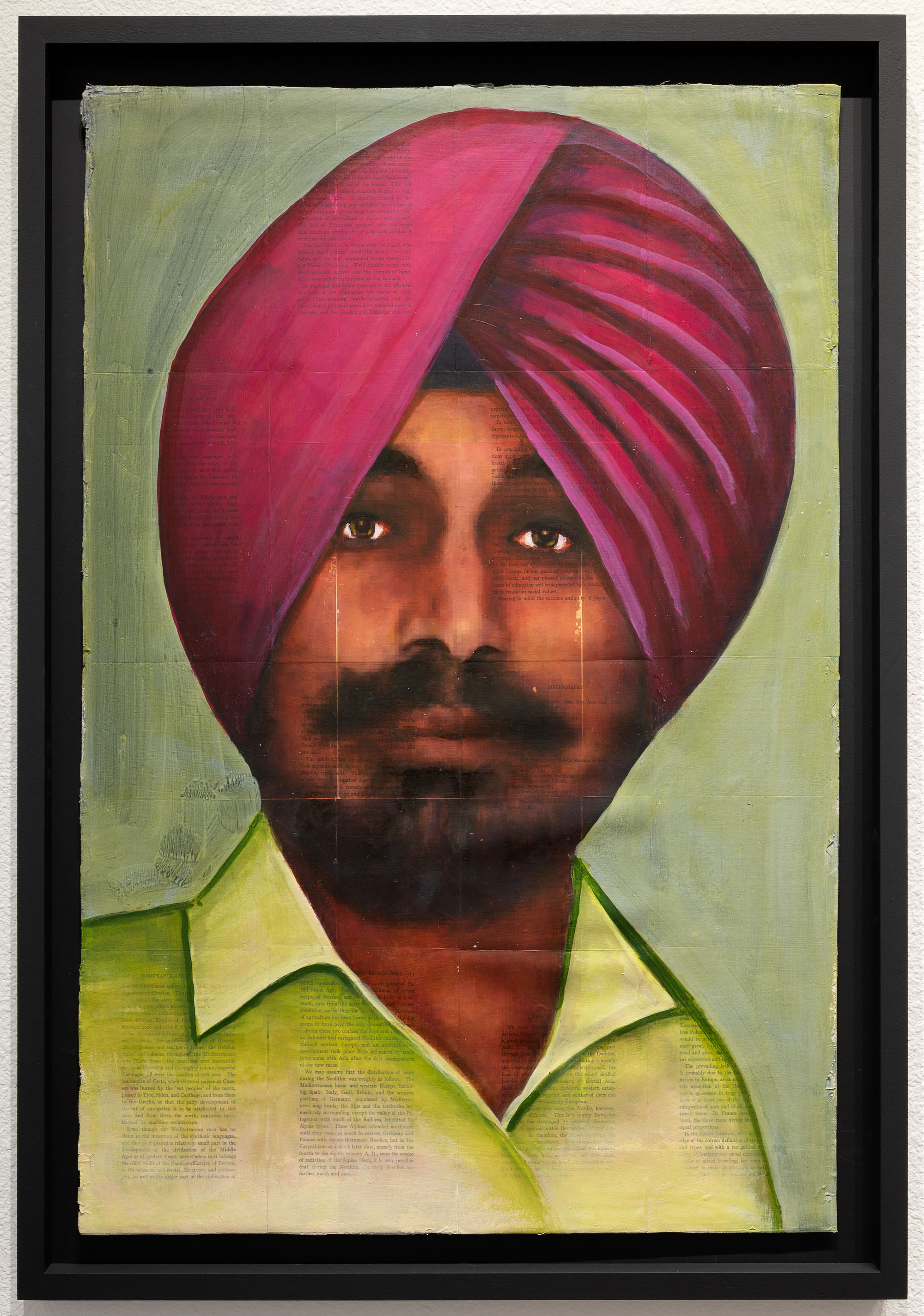Support Page Content
Rajkamal Kahlon: And Still I Rise
And Still I Rise features work from seven distinct series created between 2001 to 2021, each focusing on a particular book or archival material. Beginning with Kahlon's early incursion into the 19th century British tome Cassell’s Illustrated History of India, one of the artist’s first series to incorporate cut-out book pages, Kahlon unearths connections between past atrocities and present trauma. For this series, exaggerated body parts and grotesque figures are painted in a bright but cloying palette over the book pages. The compositions highlight the violence overlooked within this account of India’s colonial history, which for many South Asians continues to reverberate today. In her most recent project, Enter My Burning House, Kahlon memorializes victims from the 2012 mass shooting at a Sikh temple in Oak Creek, Wisconsin. The seven portraits are painted atop unbound book pages from Madison Grant’s The Passing of the Great Race, a 1916 treatise which espoused theories of race purity and influenced the restrictive U.S. immigration laws of the 1920s. In pairing the portraits of the murdered with this specific text, the artist explicitly connects U.S. immigration history with the ongoing violence against communities of color. For each of the series included in the exhibition, Kahlon seeks to restore the humanity of those who have been targeted for exclusion, even destruction.
Cassell's Illustrated History of India
Kahlon’s series Cassells Illustrated History of India derives its title from the 19th century encyclopedic tome of the same name. Cassell’s Illustrated History of India was one of a series of books published by Cassell & Co in England, famous for its educational books and periodicals. The original book, printed in two leather-bound volumes, consisted of 1200 pages and included 600 illustrations. It is considered a valuable cultural artifact documenting the colonial history of India. The artist purchased a first-edition copy at Sotheby’s in 2001 for $400.
As of one of Kahlon’s first projects to deconstruct the book form, as both a physical object and as a conceptual inquiry, the series explores the cultural, social, and political implications of recording the history of India through the colonizer perspective. Kahlon purposefully unbound the pages and detailed her responses to the book’s content in the form of drawing and painting directly on the dislocated sheets. The pages become the back-drop for the artist’s introduction of maimed bodies, bandaged heads, and exaggerated reproductive organs. Painted in a bold palette of pinks, blues, and browns, the grotesque body and its constituent parts make visible the violence and trauma unacknowledged in the book pages. Kahlon’s imagery correlates the social and political processes recorded in the book with the consumptive and productive functions of the body. Urination, defecation, lactation, eating and drinking and isolation of the respective body parts come to symbolize the physical reverberations within the body of the colonized. At once beautiful and horrific, the painted imagery seduces the viewer even as an alternative and haunting narrative unfolds.
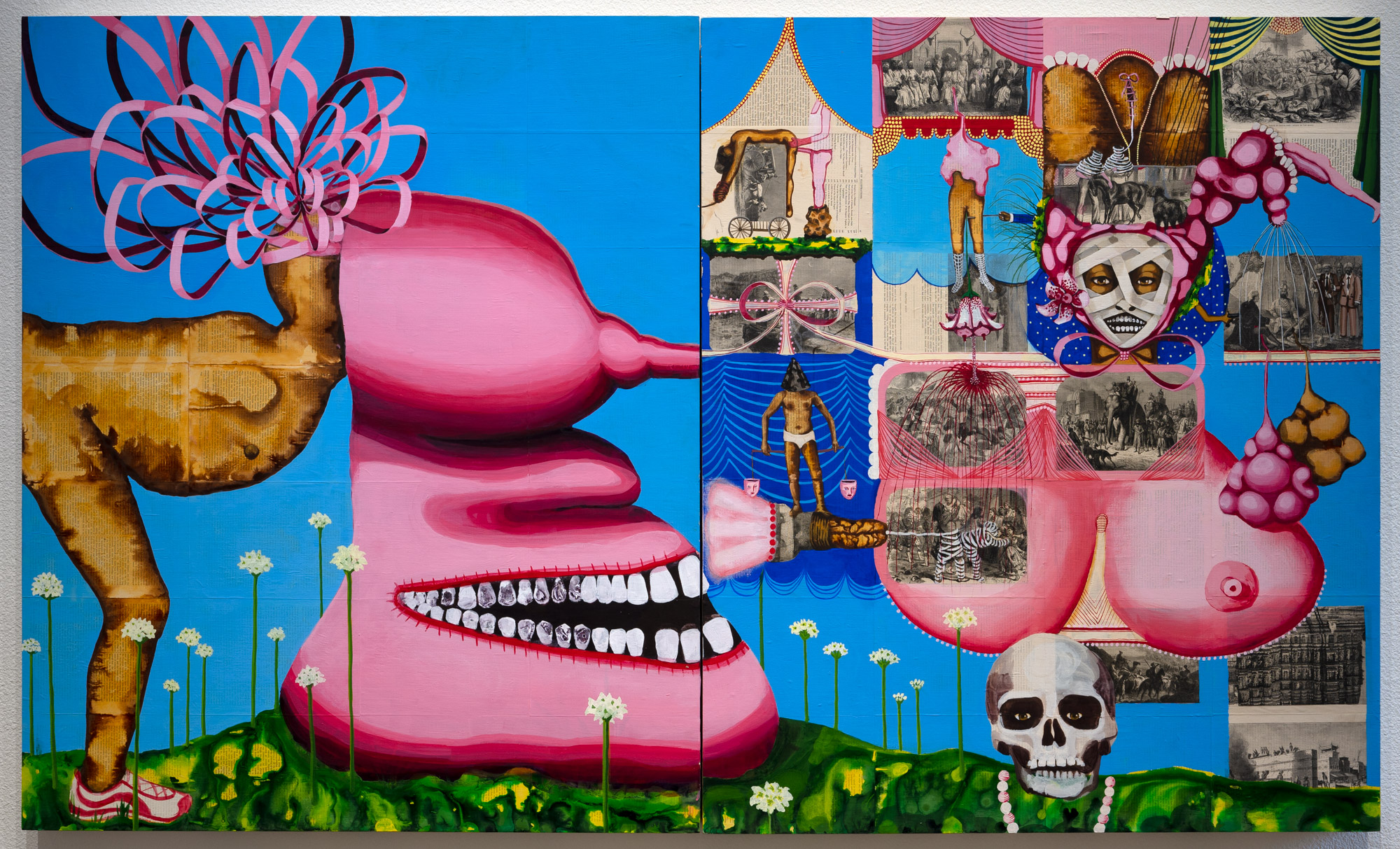
Did You Kiss the Dead Body?
Did You Kiss the Dead Body? is taken from the last line of Harold Pinter’s poem Death. Pinter read the poem during his 2005 Nobel Prize acceptance speech—a speech marked by deep criticism of American foreign policy. Did You Kiss the Dead Body? grows out of the artist’s decade long inquiry into the social implications of autopsy reports and death certificates emerging from U.S. military bases and prisons in Iraq and Afghanistan. These reports were first made public on the ACLU’s website in 2004 under the Freedom of Information Act. For Kahlon, a key question was, “How do the lives of the men in these documents come to be remembered and brought into our shared history?”
Contained within the descriptions of anonymous Iraqi and Afghan male prisoners who have died in U.S. custody is evidence of the abuse of power that transpired during the American occupations. The reports employ a rational scientific language cataloging the internal and external details of the men’s bodies while attempting to determine a cause of death, which ranges from “natural” to “undetermined” to “homicide.” Kahlon overlays European anatomical drawings providing a second and simultaneous view of the internal and external body. The dialectical exchange between image and text prompts an even more visceral response to the reports. Yet beyond the graphic nature of the drawings and the source material, Kahlon creates an opening for conversations about accountability, remembrance, humanity, and loss.
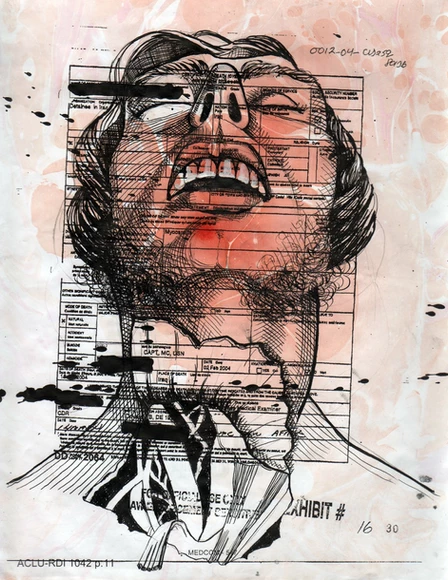
Die Völker der Erde (People of the Earth)
Die Völker der Erde (People of the Earth) refers to a 1902 German anthropology book written by Dr. Kurt Lampert. The book embraces a deeply Eurocentric and colonial worldview characteristic for its time. The illustrations included in the two volumes were staged based on constructions of the “savage,” consigning the subjects within a representation that is simultaneously racially prejudiced and dehumanizing.
Purchased from an antiquarian bookseller in Vienna during an artist residency, Kahlon approached the original pages as a space for “talking back”—to the book, to the author, to the discipline of anthropology, and to the representational violence of European colonial projects. The cumulative project now exceeds 300 drawings.
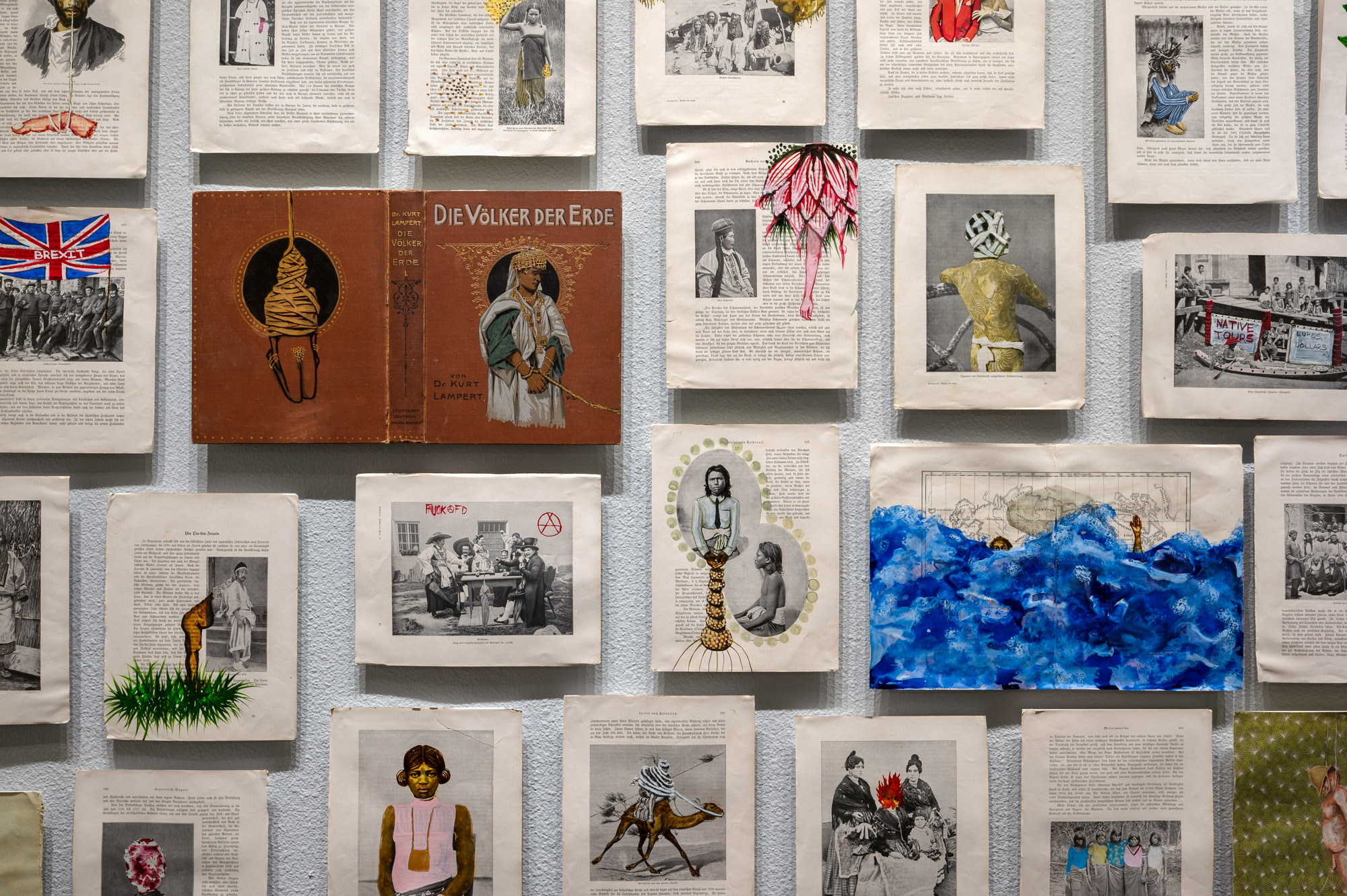
Do You Know Our Names?
Do You Know Our Names? is a response to the central role played by ethnographic photography within colonial projects. The artist’s twenty years of study and engagement with the visual legacies of colonialism all come to bear in this series. Appropriating photographic reproductions found in the German anthropology book Die Völker der Erde (People of the Earth), Kahlon enlarged the images into new reproductions, which she then uniquely reworked. The series echoes the hand-coloring done by many 19th century photographers who sought to heighten the fidelity of their images. For Kahlon, the goal is to radically alter the image through painting. Transformed by contemporary clothing, fashionable hairstyles and makeup, the portraits achieve a type of rehabilitation of each woman’s humanity, individuality and beauty, making a shift from anonymous anthropological subject into a modern individual commanding the viewer’s attention.
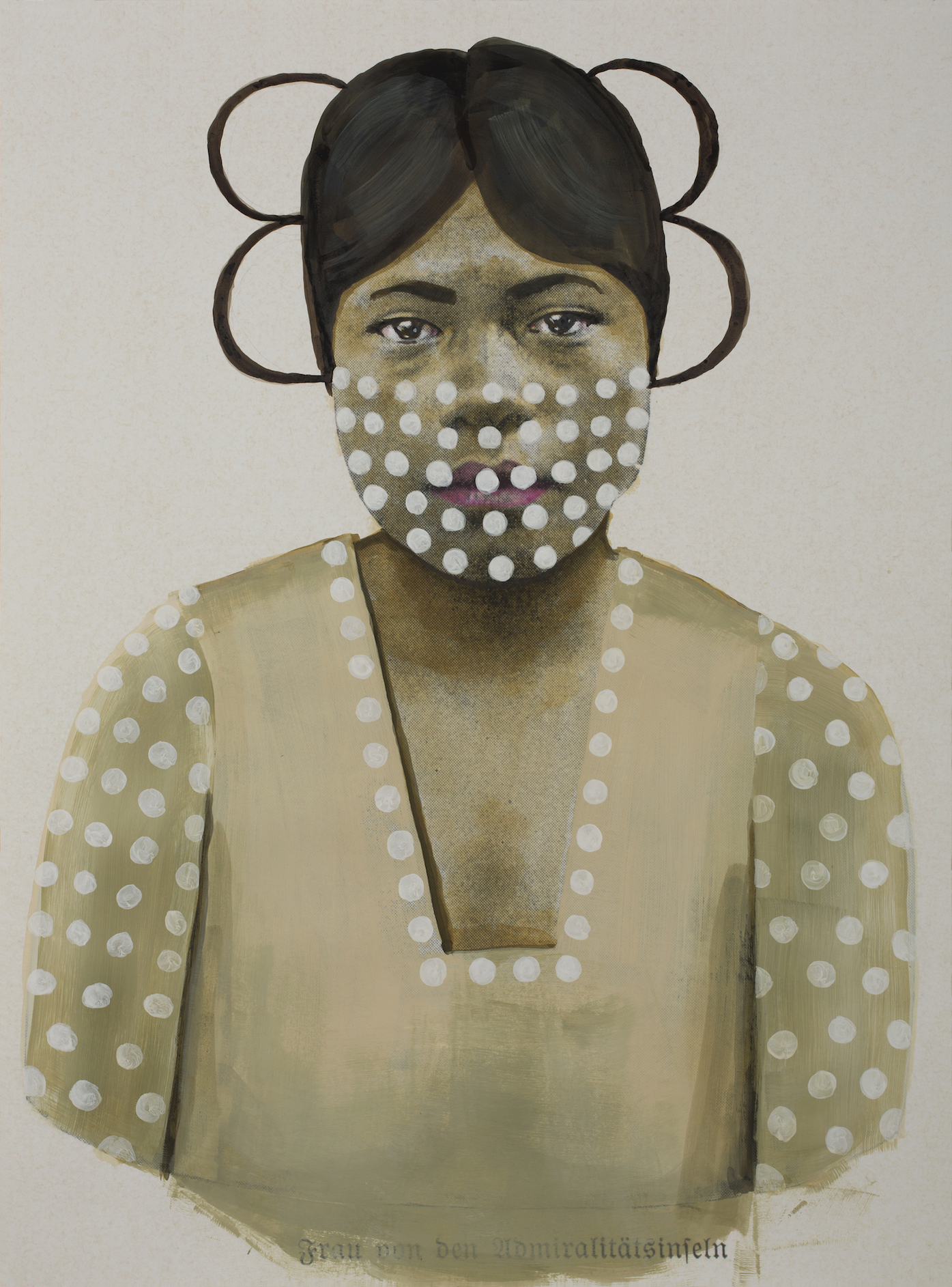
Peoples of Afghanistan
Peoples of Afghanistan, the artist’s first video work, incorporates high-resolution thermal imagery of a bombing in Afghanistan with still-photographs of Afghan men compiled during a 1960’s Russian anthropological survey. The video footage was anonymously published on the internet in 2002 of an American AC-130 Specter Gunship attack, while the anthropometric survey of Afghanistan was used as the basis for the book, Physical Anthropology of Afghanistan, published by Harvard’s Peabody Museum in 1970 as part of a Russian translation series. The anthropologic survey included a collection of data relating to hair color, skin color, size of skull and other body-based measurements.
With the recent end to the U.S. war in Afghanistan, this video gains new resonance. As archival materials, both sources denote the representational and physical violence wrought on the people of Afghanistan through U.S. and Russian occupations. Yet Kahlon’s layered imagery is also a potent reminder—all casualties of war seek remembrance.
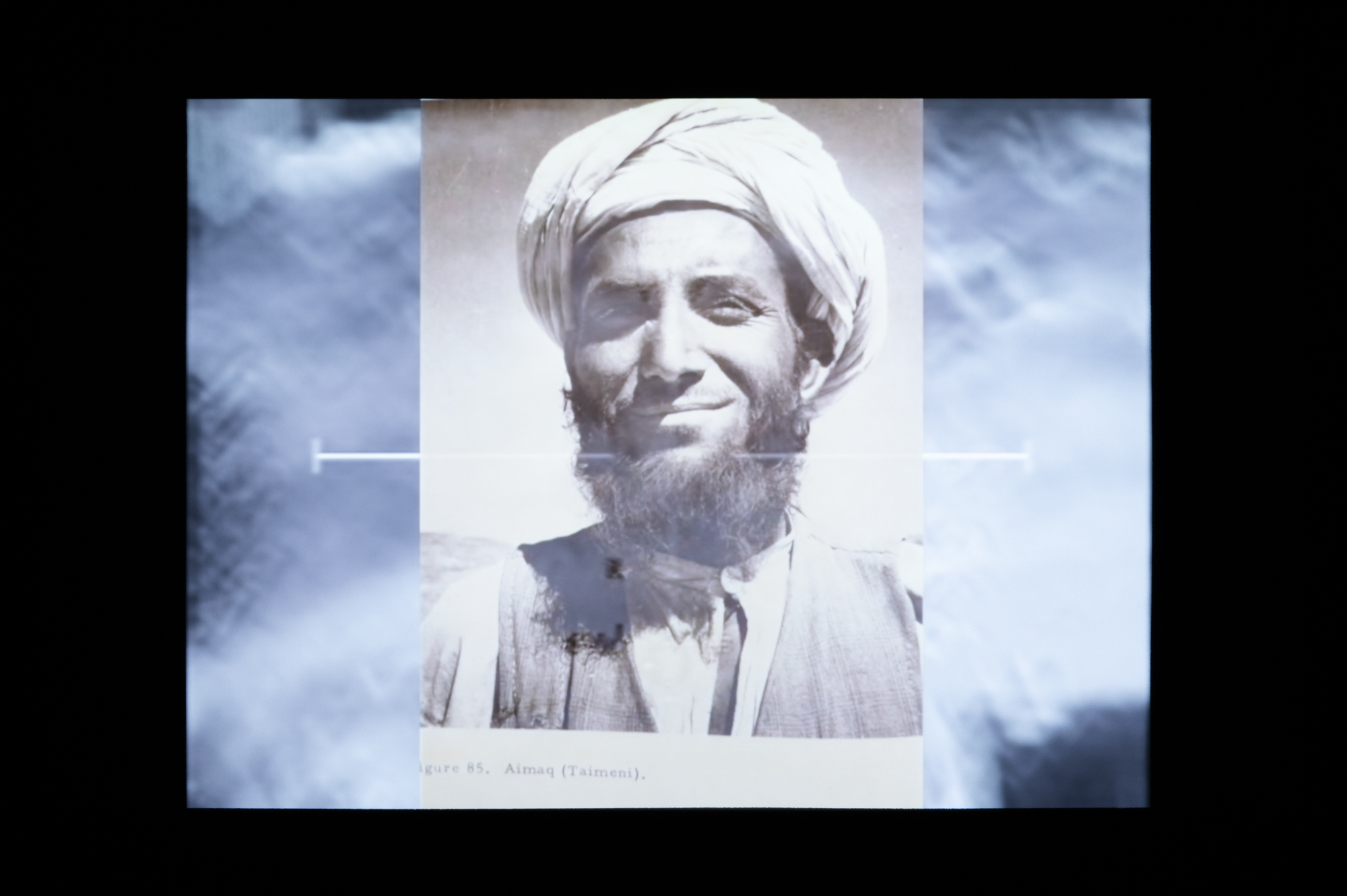
We've Come A Long Way to be Together
We’ve Come a Long Way to be Together is a series of portraits of travelers from Africa, Asia and the Middle East painted atop unbound pages from Wilfred Thesiger’s famous travel narrative, Arabian Sands. Thesiger was an English explorer and travel writer (1910 -2003). Published in 1959, Arabian Sands recounts the writer’s foot and camel travels through the Empty Quarter of Arabia, (Rub'Al Khali) between 1945-1950. Extremely popular in its time, Arabian Sands is considered a classic of travel writing. Thesiger’s photographic archive, with over 38,000 negatives and 71 personal albums of photographs, was donated to the Pitt Rivers Museum in Oxford, England. The museum’s website describes Thesiger as “probably the greatest traveler of the twentieth century, and one of its greatest explorers.”
Kahlon’s portraits atop the deconstructed book intentionally disrupt conventional ways of seeing. Through visual code-switching, the artist substitutes the iconographies of travel and tourism, typically associated with European subjectivities, with painted figures of non-Europeans. Kahlon overtly questions how we perceive ideas of travel and migration. Who is the traveler or tourist? Who is the migrant? We’ve Come a Long Way to be Together underscores the highly ideological and polemical representations associated with refugees and migration contrasted against European exploration and tourism. While one is romanticized, the other is pathologized and feared.
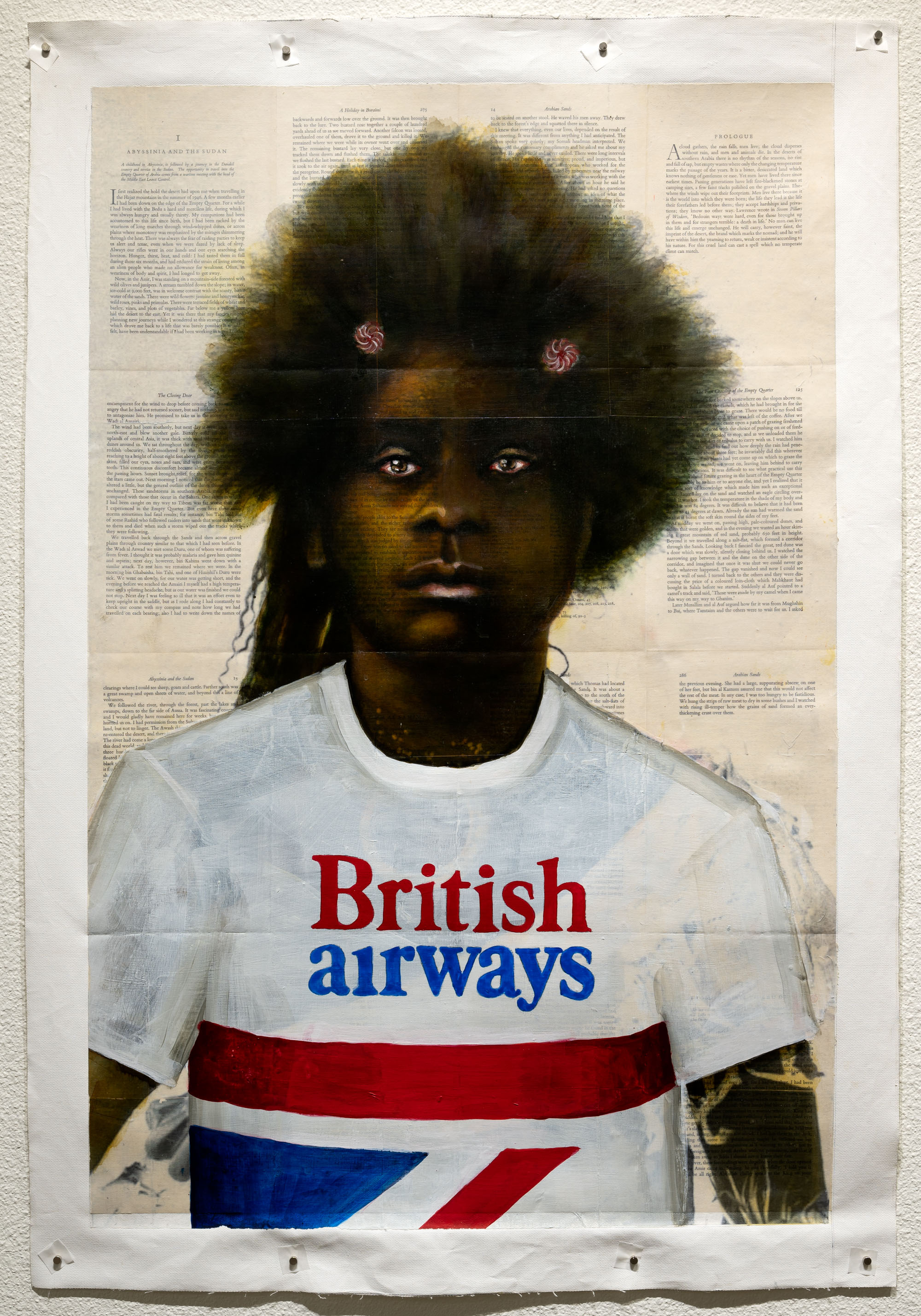
Enter My Burning House
Enter My Burning House is a project that intersects with American histories of race and anti-immigration policies. This series of portraits of seven Sikh, who were brutally murdered at their gurdwara in Oak Creek Wisconsin in 2012, combines media-sourced photography of the victims and painting overlayed on cut-out and dislocated pages of a first edition copy of The Passing of the Great Race or the Racial Basis of European History (1916) by Madison Grant. Grant was a pioneer in the American environmental conservation movement, contemporary of John Muir, friend and political ally of Theodore Roosevelt. In his influential book, he argued for the preservation of America as a ‘civilisational preserve’ for the Nordic race, advocating for immigration only from the founding stock of Anglo-Saxons and other Nordics from north-western Europe. This book not only influenced anti-immigration legislation in the U.S., with the 1924 Immigration Act, including the Asian Exclusion Act and National Origins Act. Adolph Hitler wrote a letter of admiration to Grant referring to the book as his “Bible.”
Part of Manhattan aristocracy, graduate of Yale and Columbia Universities, Grant founded the Bronx Zoo, created the first organizations protecting Bison, and the California Redwoods, and he spent his career at the center of the same conservationist circle as Roosevelt. This same group created the country’s first national parks, forests, game refuges and other public lands, but also championed eugenics, warning against “race suicide,” a term first used by Roosevelt in a 1905 speech and later attributed to Grant’s writing. Through the portraits, Kahlon highlights the buried connections between the on-going violence against immigrants in this country and the deeply rooted racism perpetuated by those who are esteemed for their environmental conservation.
In her choice of subjects for this series, Kahlon also seeks to reclaim the humanity of the Sikh victims. These are not nameless individuals. Each was a vibrant member of their communities before this tragedy. The portraits speak to a collective need to understand how past histories continue to inform our present. Remembrance can be an act of radical care.
Enter My Burning House is dedicated to the artist’s father, Avtar Singh Kahlon (1942-2017).
